The word "iconic" is overused and an impressive substitute for "well-known". A quick Google search for "iconic site:bbc.co.uk" shows that the word currently appears 54,600 times on the BBC website. A little more Googling finds the Oxford dictionaries' online definitions:
1. A devotional painting of Christ or another holy figure, typically executed on wood and used ceremonially in the Byzantine and other Eastern Churches.
2. A person or thing regarded as a representative symbol or as worthy of veneration: this iron-jawed icon of American manhood
It's the second part of the second definition I'm interested in: "worthy of veneration". Why do some engineering creations inspire awe in us while others leave us cold? Perhaps it's best to start by looking at two of the undeniably, or least deniably, iconic examples in the UK.
The Forth Bridge
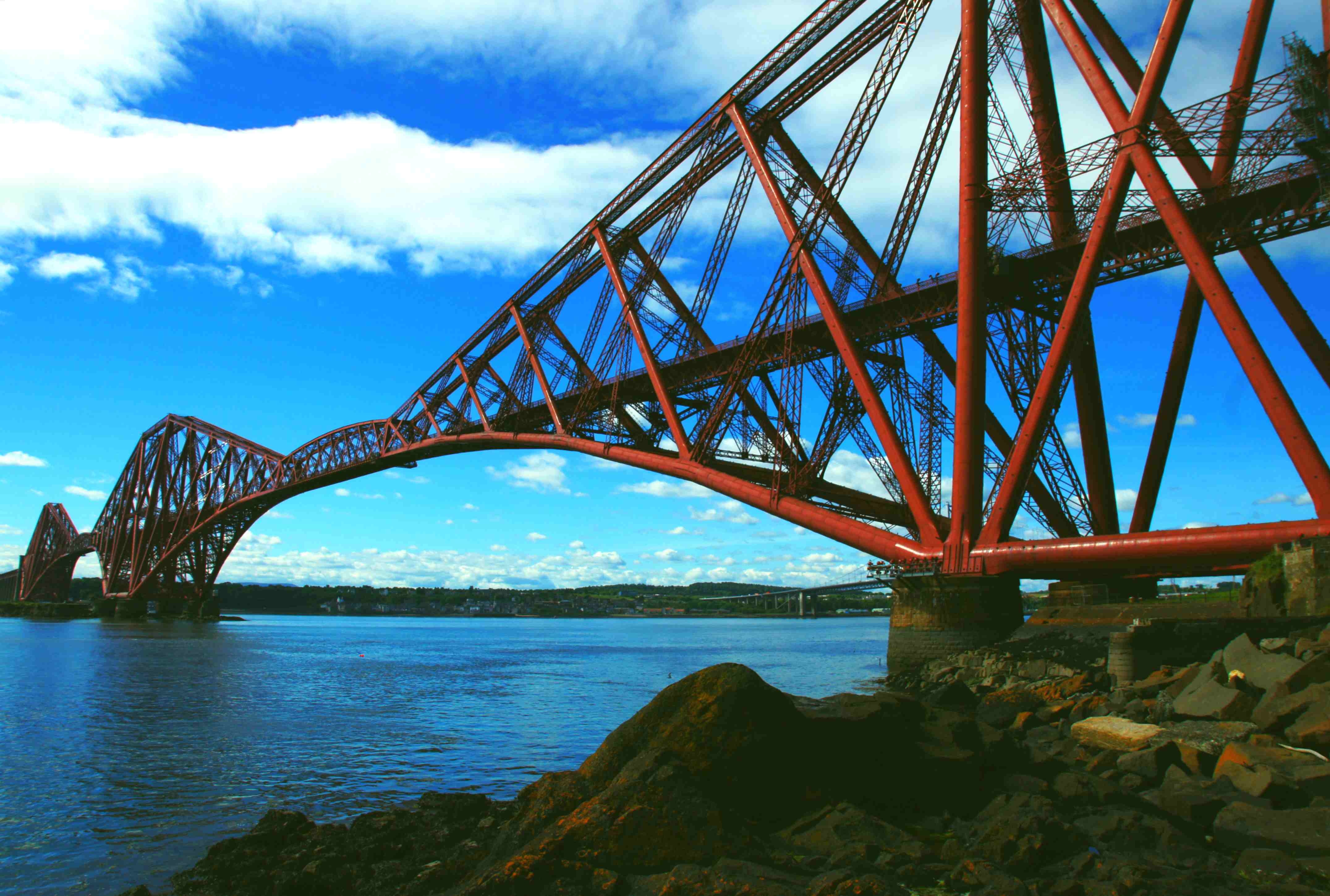
The Forth Bridge was built from 1882 to 1889 after a false start with another design by Thomas Bouch. This was hastily cancelled when his Tay Bridge collapsed in a gale. It's a balanced cantilever design: each of the three main towers supports matching sections projecting north and south, holding up themselves, trains and the small link bridge between the main sections. When built it had the longest span of any cantilever bridge in the world, and is still second longest. So far so impressive, but what is it about the Forth Bridge which makes it special? Why has it become a symbol of Scotland, to Scots as much as to foreigners?
Well, for a start, there is nothing quite like it - or nothing in the UK, anyway. Girder bridges and suspension bridges are ten a penny; it's hard to get worked up about the Forth Road Bridge when there are generally similar looking things over the Tay, the Beuly Firth, the Humber, the Severn, the Thames and so on. The Forth Bridge, though, is unique. It strides confidently, arrogantly across the sea, not just one, not two but three massive linked constructions, shouting an exultant human defiance of the constraints of geography. It's also bright red, which helps.
Concorde
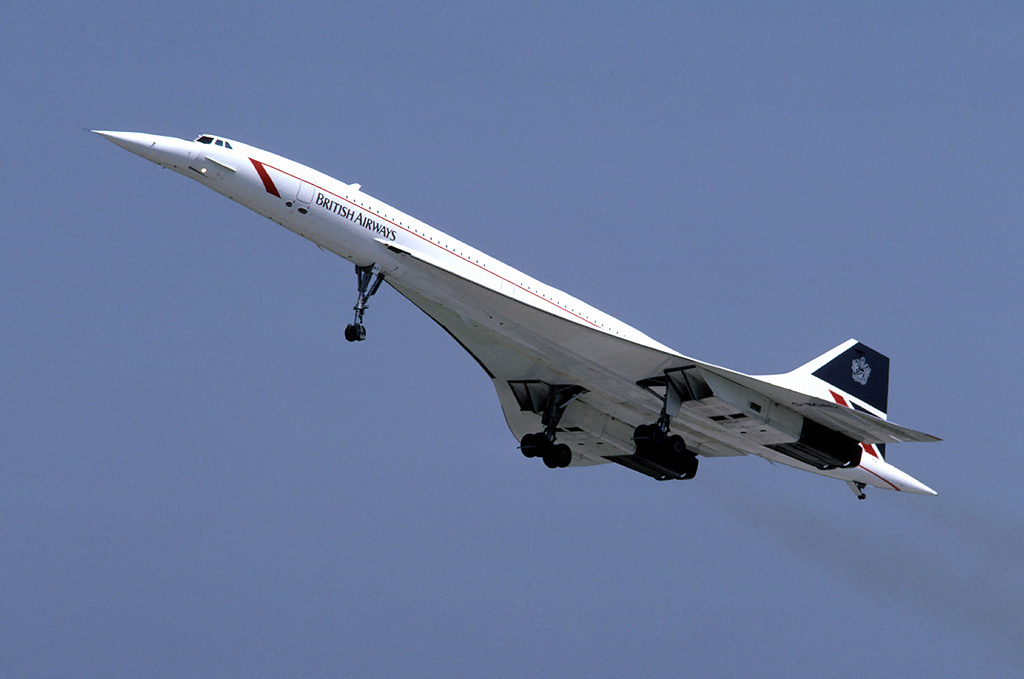
Concorde was a ridiculous idea. A small plane (just 100 passenger) with appallingly poor fuel economy flying the ultra-rich across the Atlantic at twice the speed of sound, developed with £1.3bn of British and French taxpayers money before flopping miserably in the market with only twenty built. Concorde should be no more than a curious footnote in UK engineering history, alongside the Bristol Brabazon and the Princess flying boat.
Twenty years ago I attended a friend's graduation at Reading University. Afterwards, hundreds of us were milling around outside. It was a nice sunny day and the pub and café gardens of Reading were full. Just before six o'clock, a curious hush fell - an air of expectancy. Conversations drifted into silence, watches were looked at and eye turned upwards. Then, just after the hour, the six o'clock Concorde flight from Heathrow to New York passed overhead. Everyone watched, spellbound, then conversations restarted.
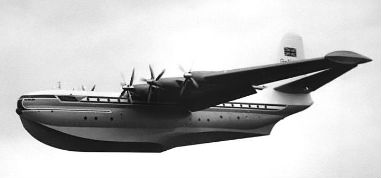 At that time, Concorde had been flying from London to New York for approximately twenty years, with a number of flights a day passing over Reading. Even so, it still had the profound power to fascinate, to entrance and to set aside the bustles and conversation of everyday life. Why, you ask? Well, for a start, it just looks right. The Princess was a dumpy piece of engineering which only its designer could love, but Concorde was and still is aesthetically perfect from the balance of fuselage around the wing to the delicate curve of the leading edge.
At that time, Concorde had been flying from London to New York for approximately twenty years, with a number of flights a day passing over Reading. Even so, it still had the profound power to fascinate, to entrance and to set aside the bustles and conversation of everyday life. Why, you ask? Well, for a start, it just looks right. The Princess was a dumpy piece of engineering which only its designer could love, but Concorde was and still is aesthetically perfect from the balance of fuselage around the wing to the delicate curve of the leading edge.
Then there was what it does. Air travel is no longer a novelty; the rise of low fares airline have given it the glamour of a bus ride (with none of the convenience and rather worse customer service) and we are all used to travelling around the world at five hundred miles an hour. But to exceed the speed of sound is something else. Concorde flew faster than unaided humans can shout. It escaped from the physical limitations which define "here", "there", "nearby" and "far" and instead showed us the possibilities of escape. It's precisely the same idea which makes the hyperspace jump in science fiction so enticing: a leap away, beyond, apart.
So what links these two very different iconic creations? One is fifty thousand tonnes of steel sitting on another fifty thousand tonnes of granite: the other a mere eighty tonnes of aluminium. One is a solid, immovable tribute to Victorian civil engineering, still in daily use while the other was a frail and frantic dart, now only to be seen in museums. I think they gained their status because both of them answered very basic needs of the human condition: to take us beyond ourselves and our world, to cross the universe, to boldly go. And to look fantastic.
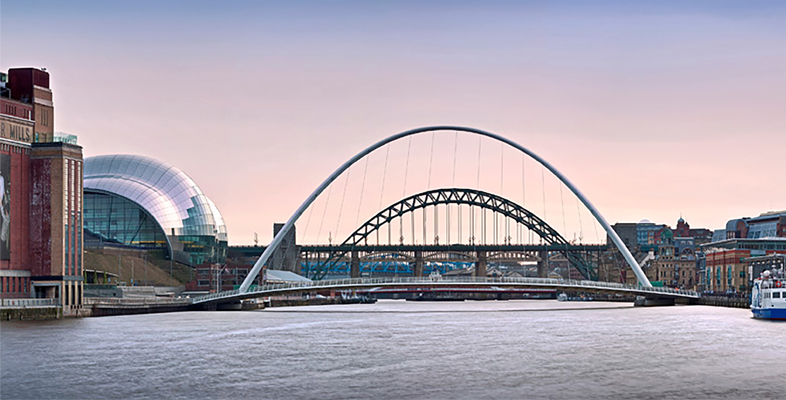
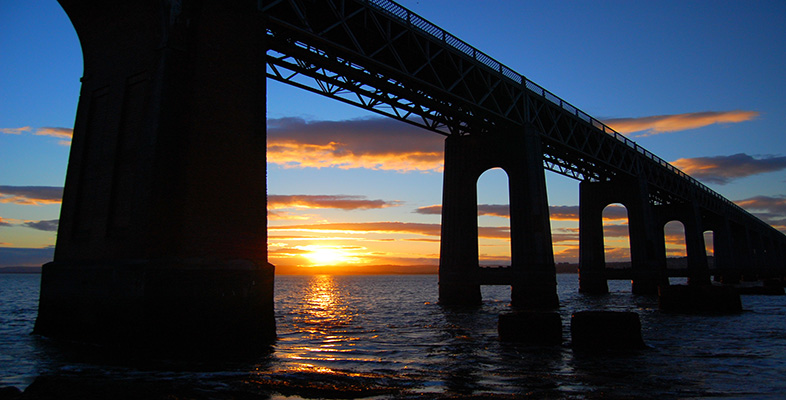
Rate and Review
Rate this article
Review this article
Log into OpenLearn to leave reviews and join in the conversation.
Article reviews